Species: Notorynchus cepedianus (Perón, 1807); from the Greek roots noto (back) and r(h)ynchos (snout); and the Latin cepidianus (spotted).
Alternate Names: Sevengill shark, cow shark, spotted cow shark, mud shark, bluntnose shark, broad-snout, sevengill, k’wet’thenéchte (Salish, British Columbia), and my personal favorite (from Australia) Tasmanian tiger shark. This is another shark with an almost worldwide distribution and as a result it has many foreign names including cação-bruxa (Portuguese), cañabota gata (Spanish), gatita (Spanish), gevlekte zevenkieuwshaai (Dutch), brednæset syvgællet haj (Danish), kammzähner (German), koeihaai (Afrikaans), platneus-sewekiefhaai (Afrikaans), minami-ebisuzame (Japanese), ebisuzame (Japanese), platnez (French), requin malais (French), siebenkiemiger Pazifischer kammzähner (German), siedmioszpar plamisty (Polish), tiburón pinto (Spanish), tollo fume (Spanish), and tuatini (Maori).
Identification: The only California shark with 7 gill slits. The body is somewhat heavy and flabby, tapered with a broad head, blunt snout, and small eyes. They have a single dorsal fin far back on the body; upper lobe of tail is very long. Five rows of small, sharp, pointed teeth in the upper jaw—except for one middle tooth (effective for holding prey); lower teeth saw-like (effective for tearing and cutting prey). Color seems to vary depending upon location and they may be able to slightly alter their color. Fish from San Francisco Bay are typically olive brown to a muddy gray color while those from Humboldt Bay are usually a pale silvery gray to reddish brown: all have black spots on body and fins. An unusual albino seven-gill was caught in the San Mateo Shark Derby back in 1952 and later displayed at the Steinhart Aquarium.
Size: Length to at least 9.7 feet and nearly 300 pounds in size (although based on recent catches they may have a longer length and greater weight). Most sevengill caught from piers are young fish 2-4 feet in length and under 50 pounds in weight. However, most years seem to see at least a few large 6-foot plus fish taken. The official California record fish weighed 276 lb. 0 oz. and was taken in Humboldt Bay in 1996. Larger fish have been taken. A 322-pound sevengill was caught in San Francisco Bay in 2013 but then an even larger fish, a 342-pound sevengill, was caught in San Francisco Bay on July 2, 2017.
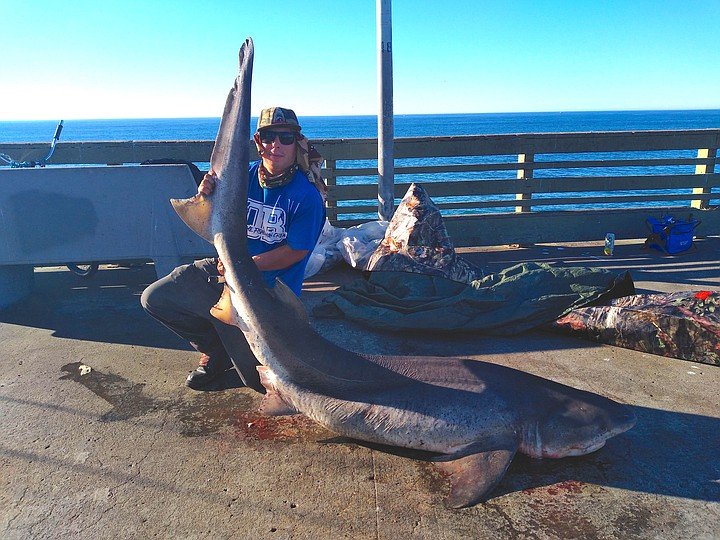
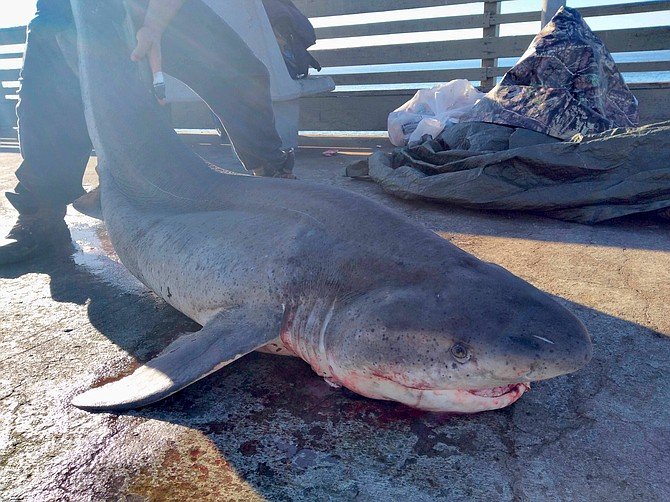
The largest sevengill reported to PFIC was a fish taken from the Ocean Beach Pier in San Diego on December 20, 2020. Measurements given were a length of 9 ½ feet, a girth of about 3 ½ feet, and an estimated weight of over 300 pounds (but that’s probably high). The shark was caught by Danny Reid of the OB Extreme Shark Fishing Crew who said it took over two hours to haul in the large shark. It was caught on a moray eel bait. Several additional large 7-gills have been reported from the Ocean Beach Pier. In May of 2006, a nearly 8-foot-long, 112-pound 7-gill shark was landed, while May of 2008 saw the capture of a 7-gill estimated to be 10-10 ½ feet long. The only problem is that 7-gills are only supposed to reach a little over nine and a half feet in length. Julian Beltran, another member of the OB Extreme Shark Fishing Crew, landed a large sevengill estimated at 150 pound in June 2023.
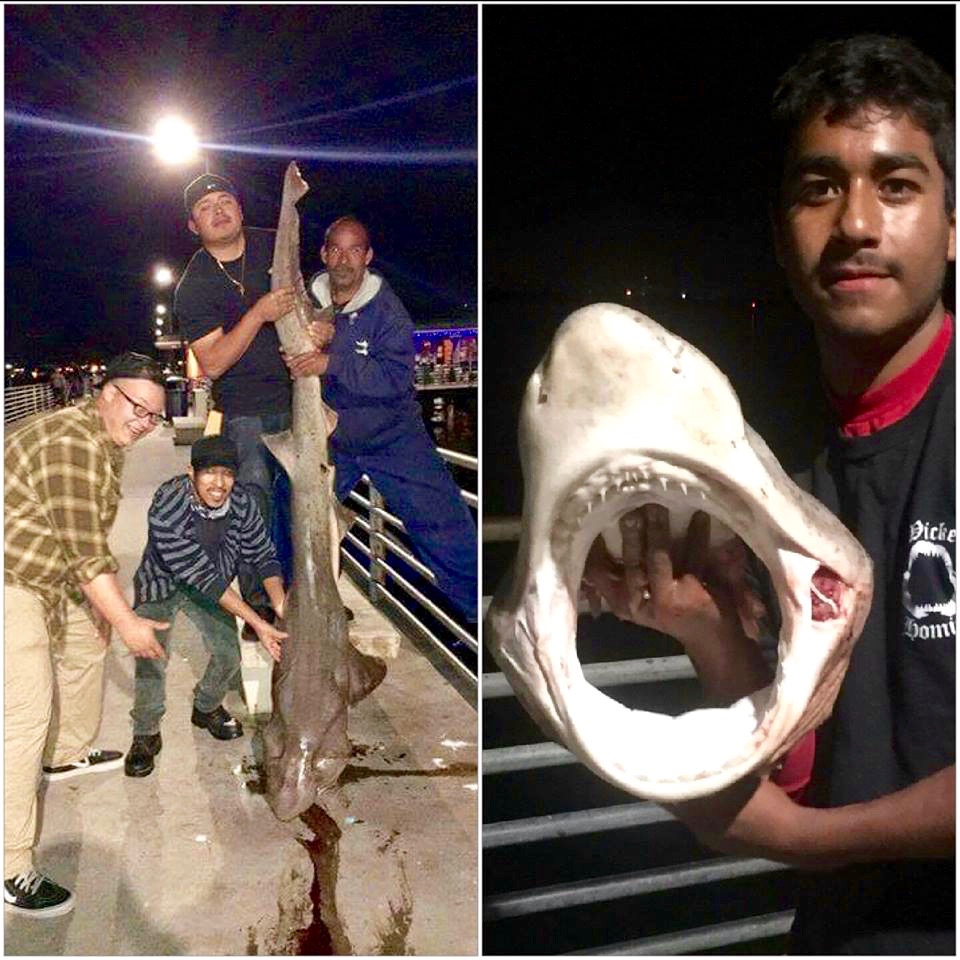
Once rarely seen (or reported) from San Diego piers, both Ocean Beach and several other local piers have also seen 7-gills enter their catches during the past decade. A huge sevengill was reported from the Imperial Beach Pier in February 2016, Shelter Island has reported several 7-gill sharks that exceeded 100 pounds in weight, and Crystal Pier saw a large sevengill in 2020. Why the uptick in numbers of sevengill being caught? No one really knows if there are more of the sharks or if more anglers are targeting them.
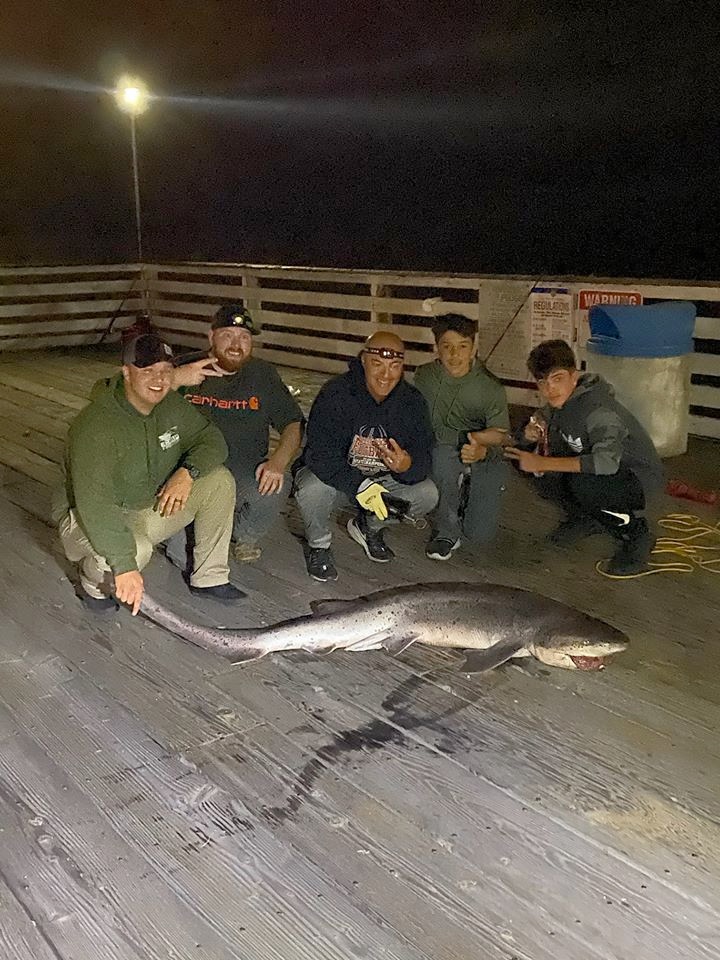
San Francisco Bay has traditionally been the home to most California-caught sevengill but other SoCal and CenCal piers have also recorded the large sharks. In October 2009, the Goleta Pier saw the capture of both six-foot and eight-foot 7-gills. Just a month later saw another 7-gill, this one a seven-foot, nine-inch fish. A large sevengill was taken at the Cayucos Pier in December of 1998. Pictures show a large 7 ½-foot-long fish with a reported weight of 180-pounds (which again seems high).
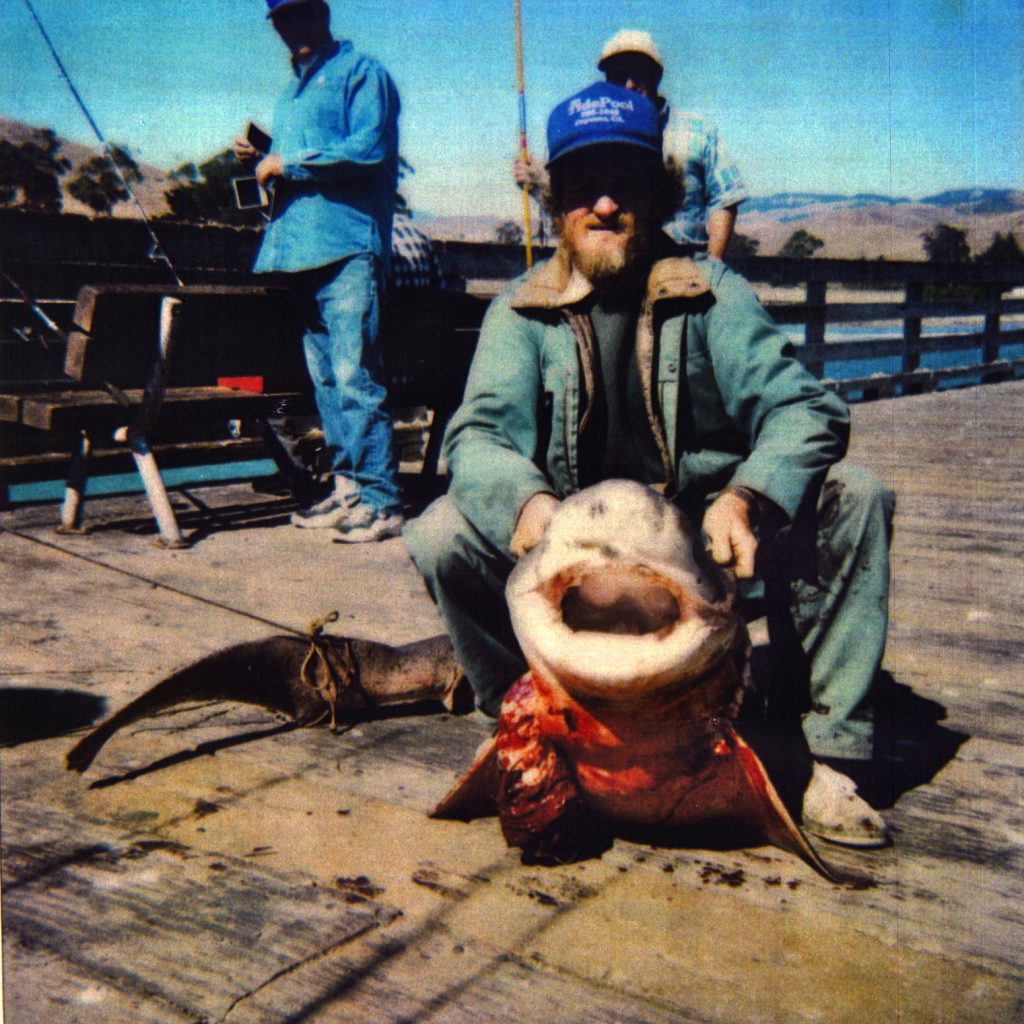
Range: Found in temperate waters of the Pacific, Indian and South Atlantic Oceans (and very common off South Africa and Namibia). Found in North America from the Gulf of California to northern British Columbia off Butedale and Bonilla Island. Common in central California, especially San Francisco Bay.
Habitat: A bottom-oriented shark that is typically found in water less than 150 feet deep. They are common to inshore areas (especially rocky areas near kelp) and in bays, especially San Diego Bay, San Francisco Bay, Tomales Bay and Humboldt Bay. Most common from the spring to the fall; may migrate to deeper water during the winter. In San Francisco Bay, springtime sees mama sevengill dropping her pups (up to 82 young ‘uns) and that’s when small, immature fish make a regular appearance at several piers.
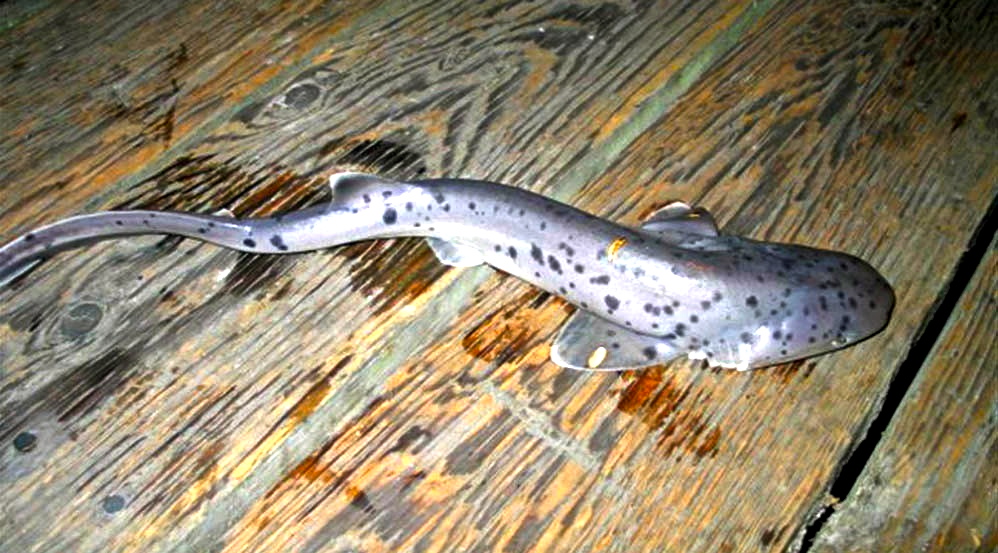
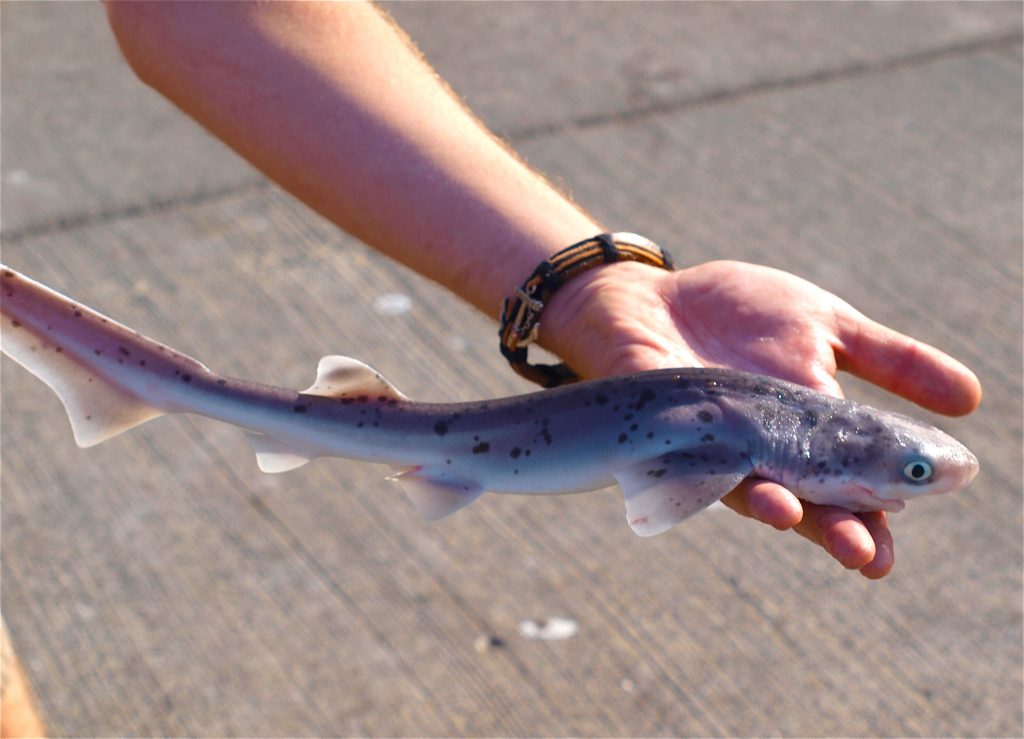
Piers: Mainly caught at piers that sit close to kelp or fairly deep water, i.e., deep-water channels in a bay. Best SoCal bets: Imperial Beach Pier, Ocean Beach Pier, Crystal Pier (San Diego), Shelter Island Pier (San Diego Bay), Newport Pier, Goleta Pier and Gaviota Pier. Best Cen bets: Morro Bay Wharf, Cayucos Pier, Candlestick Park Pier, Oyster Point Pier, Dumbarton Pier, Port View Park Pier (Oakland), Elephant Rock Pier, and the Angel Island Pier. Best NorCal bets: Del Norte Street Pier (Eureka).
Shoreline: Sometimes caught from shoreline areas in San Diego and San Francisco Bay, most commonly early spring or late fall when the fish appear to move into shallower areas to spawn.
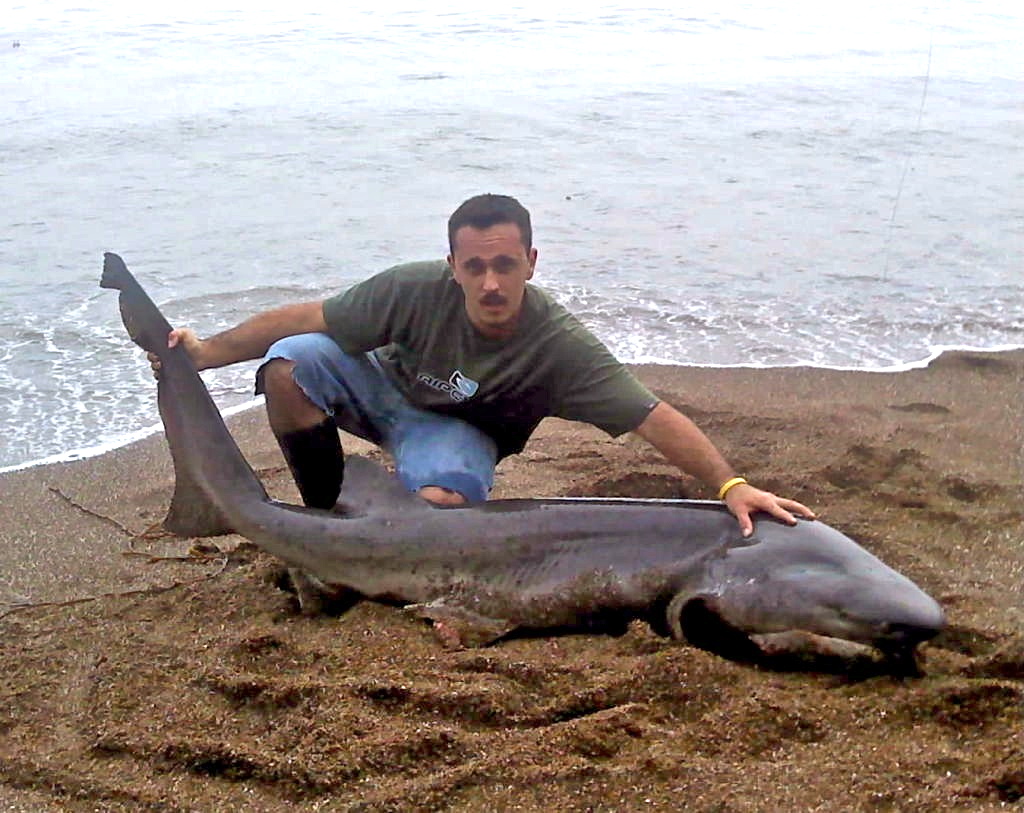
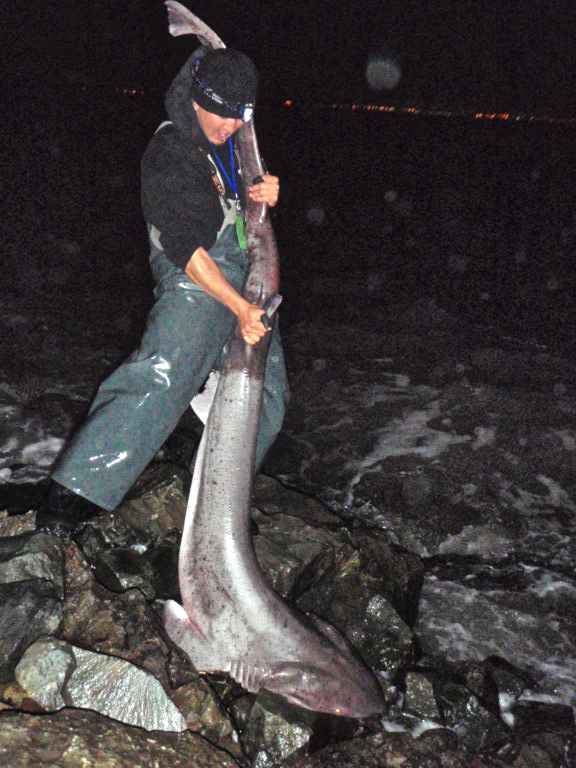
by Capt.raysharking (Matty) in 2012
Boats: A common goal for anglers fishing from boats in San Francisco and Humboldt Bay.
Bait and Tackle: An opportunistic predator that feeds on many other fish including salmon, sturgeon, smaller fish, rays and fellow shark. It’s reported that 7-gills sometimes hunt in packs and use teamwork to capture larger food such as seals and dolphins. However, the use of seal meat and dolphin meat for bait by humans tends not to be PC (it’s also illegal). Instead, typical baits include whole fish such as mackerel and sardines, whole squid, small sharks, and salmon bellies. Typically anglers seeking out sevengills use heavier tackle—50+ pound line and steel leaders baited with a whole fish (and I heard of one angler using a live small brown smoothhound shark as bait). Although most of the 7-gills that are caught are captured by anglers specifically fishing for sharays (sharks and rays) and using this fairly heavy equipment and large baits, quite a few smaller “youngsters” are caught in San Francisco Bay, especially during the spring months.
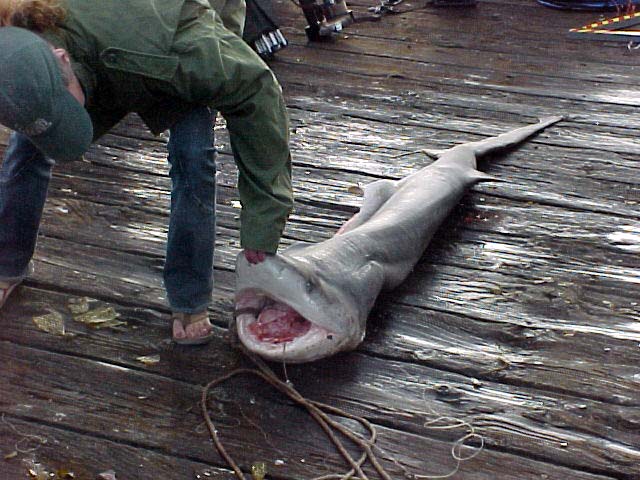
Food Value: Considered one of the best eating sharks. They have a firm texture, off white color after cooking, and a mild taste. Due to their size, both fillets and steaks can be procured from the flesh and though almost any cooking method can be used, frying and bbq’ing are probably the most common methods.
Comments: One of the most primitive of sharks as well as one of the largest and more dangerous sharks handled by California pier fishermen. Watch out for the teeth! David A. Ebert, in Sharks Rays, and Chimaeras of California, writes that “Other than the Great White Shark they appear to be the dominant elasmobranch in the nearshore marine environment.” In addition, “Sevengills have been implicated in about a dozen attacks on dogs in and around San Francisco Bay. A bather in at least one attack was playing with his dog in shallow water when a 1.5- to 1.8-m-long ‘spotted’ shark attacked. Although the shark was unidentified, the attack occurred inside San Francisco Bay in an area in which sevengills are fairly abundant.” It’s also reported that 7-gills have bitten aquarium divers.
The reference to an attack on a bather may refer to the following: “A shark, measuring eight feet and five inches, in attempting to catch a little boy paddling in the water at Alameda, ran so far up on the sand as to be unable to swim back to deep water, and where he was “done for” with an axe. — Santa Cruz Weekly Sentinel, August 27, 1881
Sevengill are reported to be avid hunters, stealth bottom rovers that are primarily nocturnal in nature feeding at night. They will ambush other fish in the dark or low light conditions with a burst of speed and sometimes will even hunt in schools with other sevengill.
Large 7-Gill Shark Caught From Piers
≈250 Lbs. — Ocean Beach Pier, Danny Reid, December 20, 2020
Source: Ocean Beach Pier Bait Shop (and others)
≈ 185 Lbs. Santa Monica Pier, 1996
Source: Santa Monica Pier Bait Shop
≈ 180 Lbs. Cayucos Pier, November 1998
Source: Glenda, The Tide Pool B&T, Cayucos
≈ 150+ Lbs. — Crystal Pier (San Diego), March 2012
Source: PFIC
≈150 Lbs. — Ocean Beach Pier, Julian Beltran, June 2023,
Source: Ocean Beach Pier Bait Shop (and others)
112 Lbs. — Ocean Beach Pier, May 2006
Source: PFIC
≈ 100 Lbs. — San Clemente Pier, December 23, 2017
Source: Hogan’s Bait and Tackle (Dana Point)/PFIC
≈ 100 Lbs. — Venice Pier, Paul Vasques, February 4, 1979
Source: Los Angeles Times, February 6, 1979
≈ 100 Lbs. — Several from the Shelter Island Pier, 2015-2023
Source: PFIC
10-10.5-Feet-Long (No weight) — Ocean Beach Pier, May 2008
Source: Ocean Beach Pier Bait Shop
9.5-Feet-Long (No weight) — Ocean Beach Pier, December 22, 2021.
Source: Shirley, Ocean Beach Pier Bait Shop
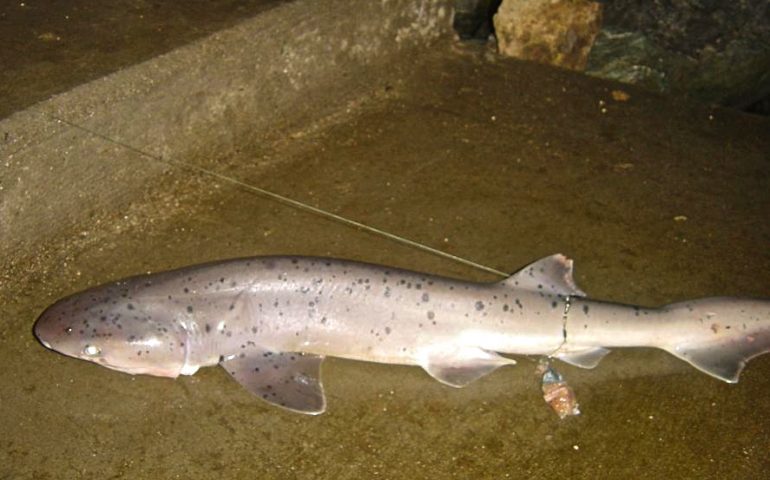
Ken, I really like how you updated the 7 gill catches on this blog. This is a good representation of what can be done out there.
I like the pictures of Karl, Dom, and Matty that you have added. All, very good fishermen.
Hi! I am a shark researcher hoping to connect with some shark fishermen that fish for sevengills. I am especially interested in any fishermen in southern California that have seen sevengills. Would you be willing to contact me to answer a few questions? I am hoping to learn more about sevengill sharks from fishermen along our coastline!
I’m gill fisherman that can regularly show you 10’+ fish hit me up
My dog was swimming yesterday and had just stepped onto shore when I saw a shark fin! We were on a tiny beach by the Golden Gate Bridge called Horseshoe Bay near the Coast Guard.
It was about 5 ft from the shore when I first spotted it and then swam so close I thought it was going to swim ashore. The water was about one foot deep. It was thrashing a bit and kept its head above water which seemed odd but I don’t know anything about them so maybe that’s normal.
Someone else that saw it said it was a Sevengill Shark. Super scary. Happy it didn’t eat my dog! Guess I need to find a new spot♀️
How do I get a fish registered? I’ve landed 7 bigger than the biggest here in the past 2 years all on tape.